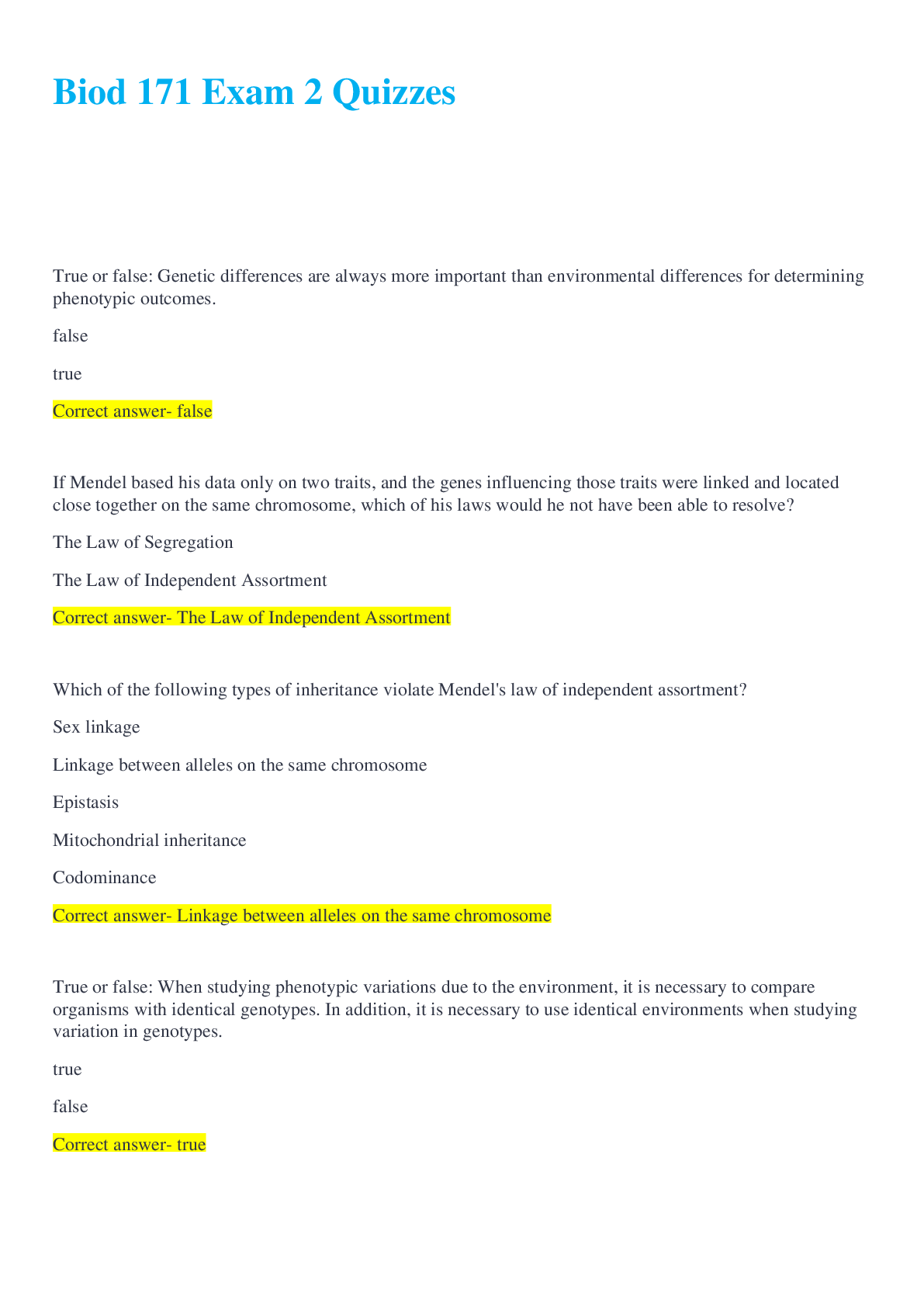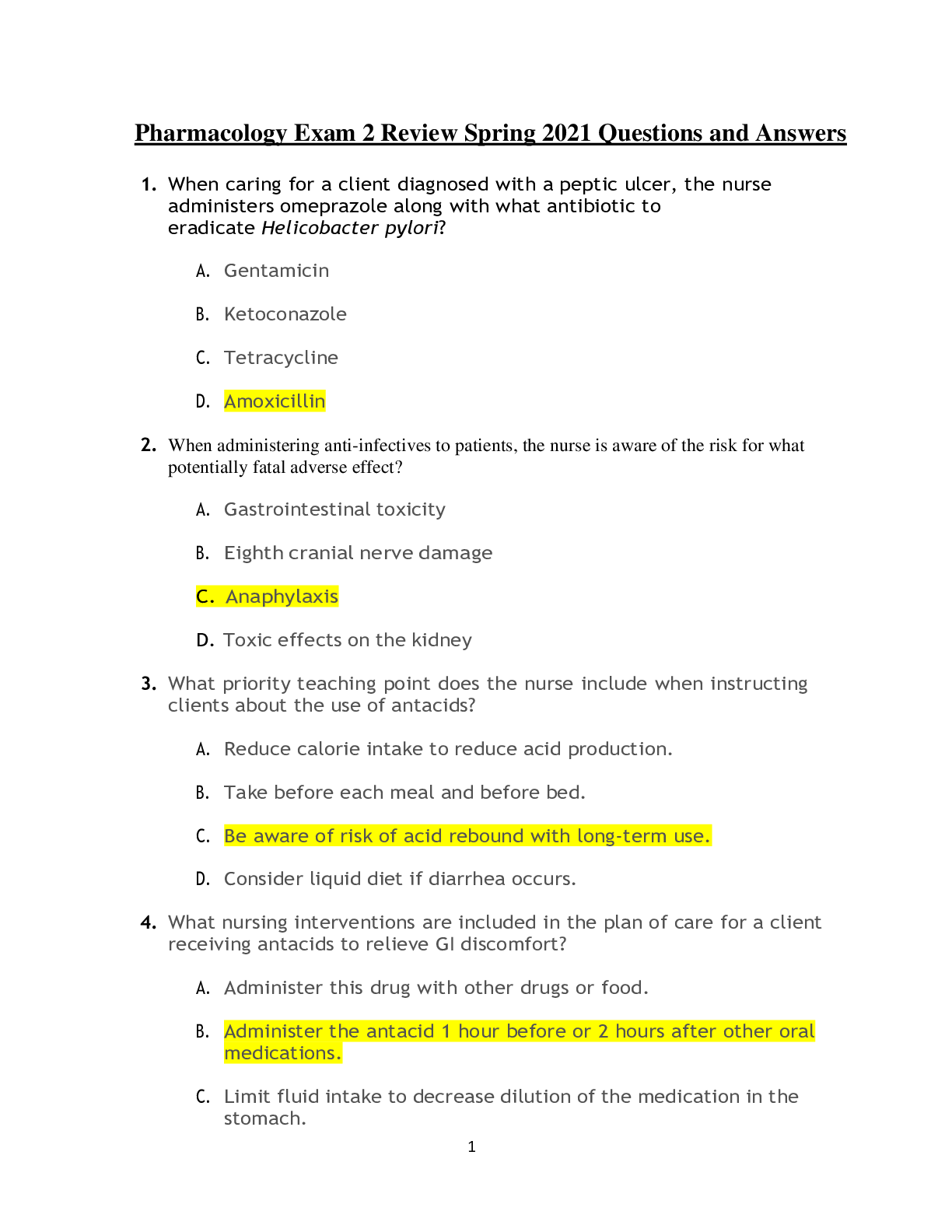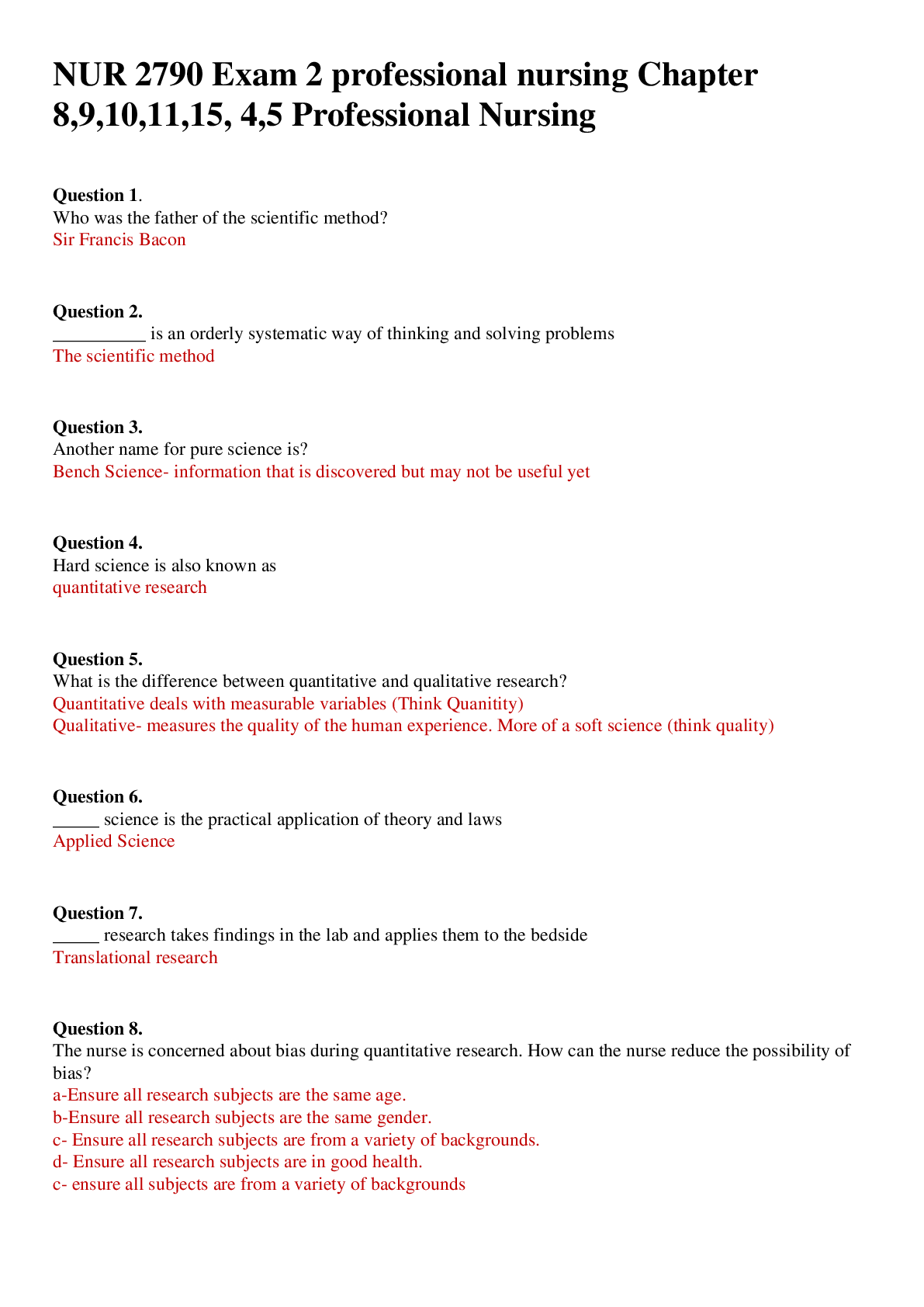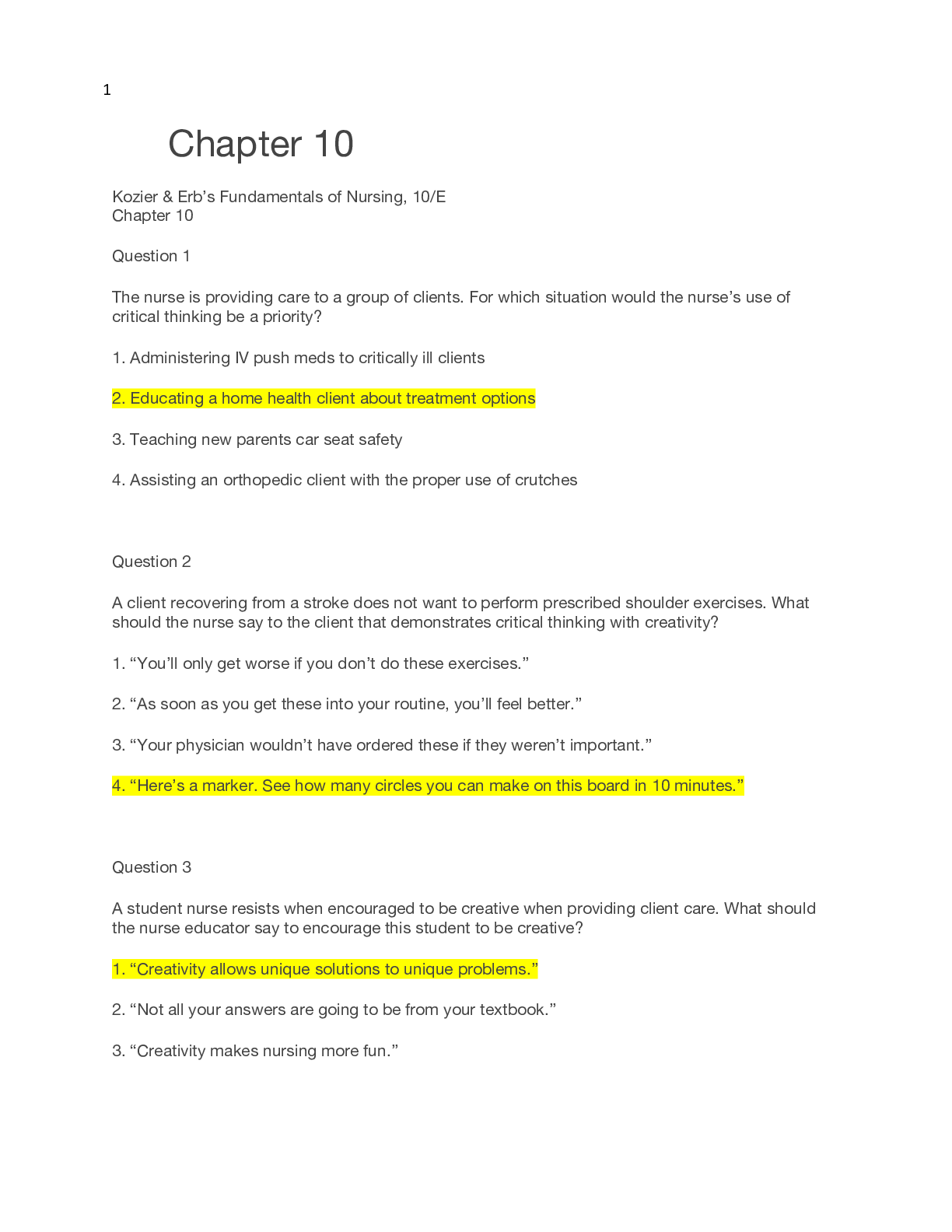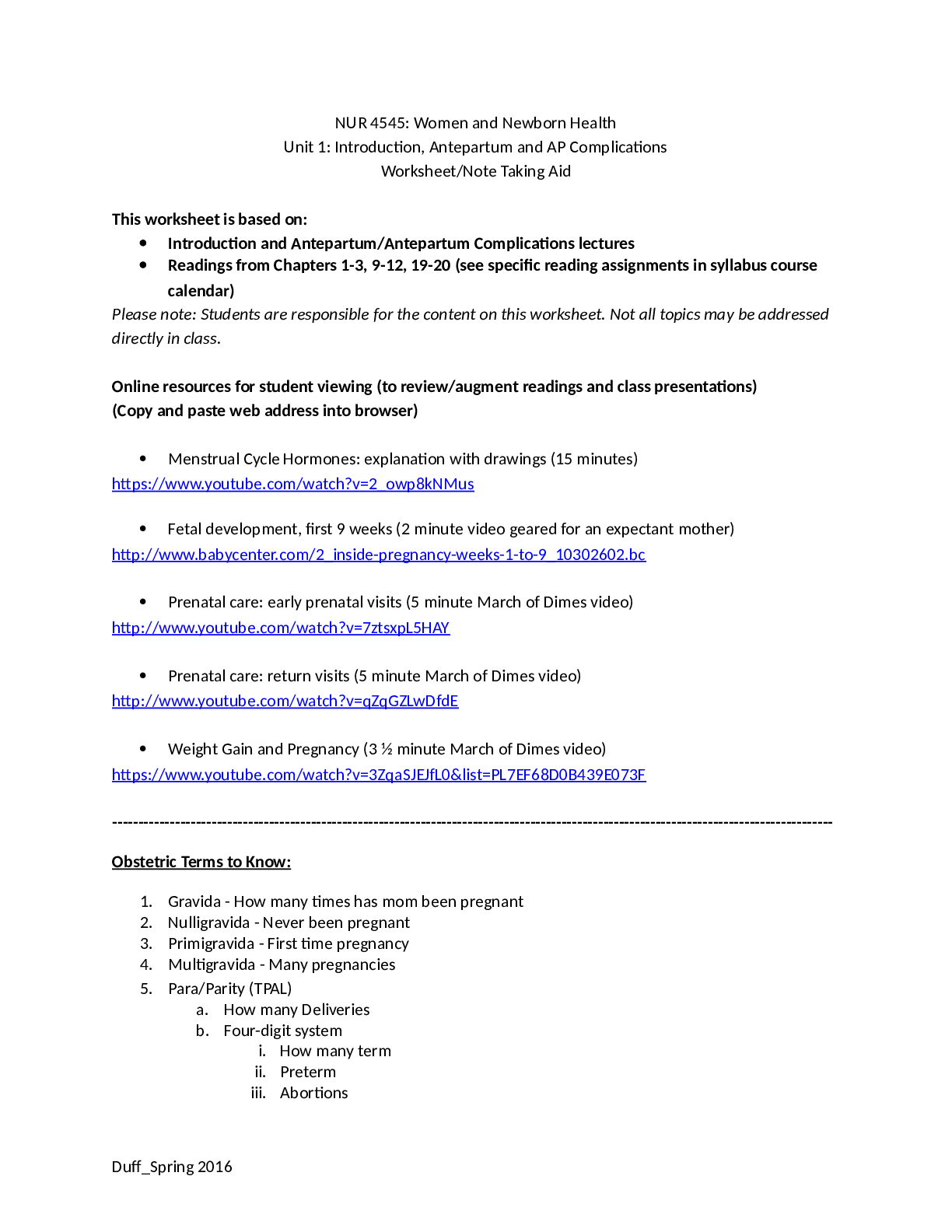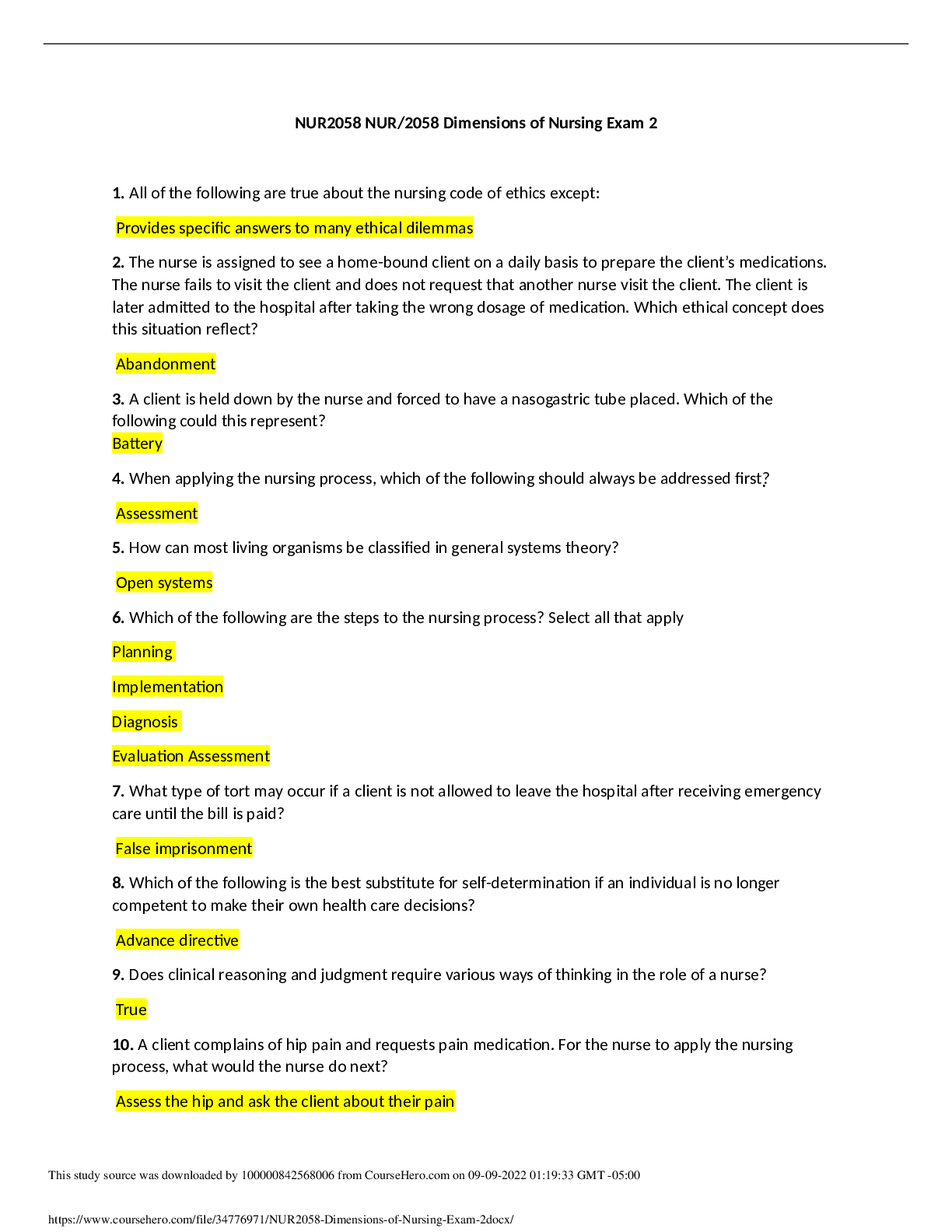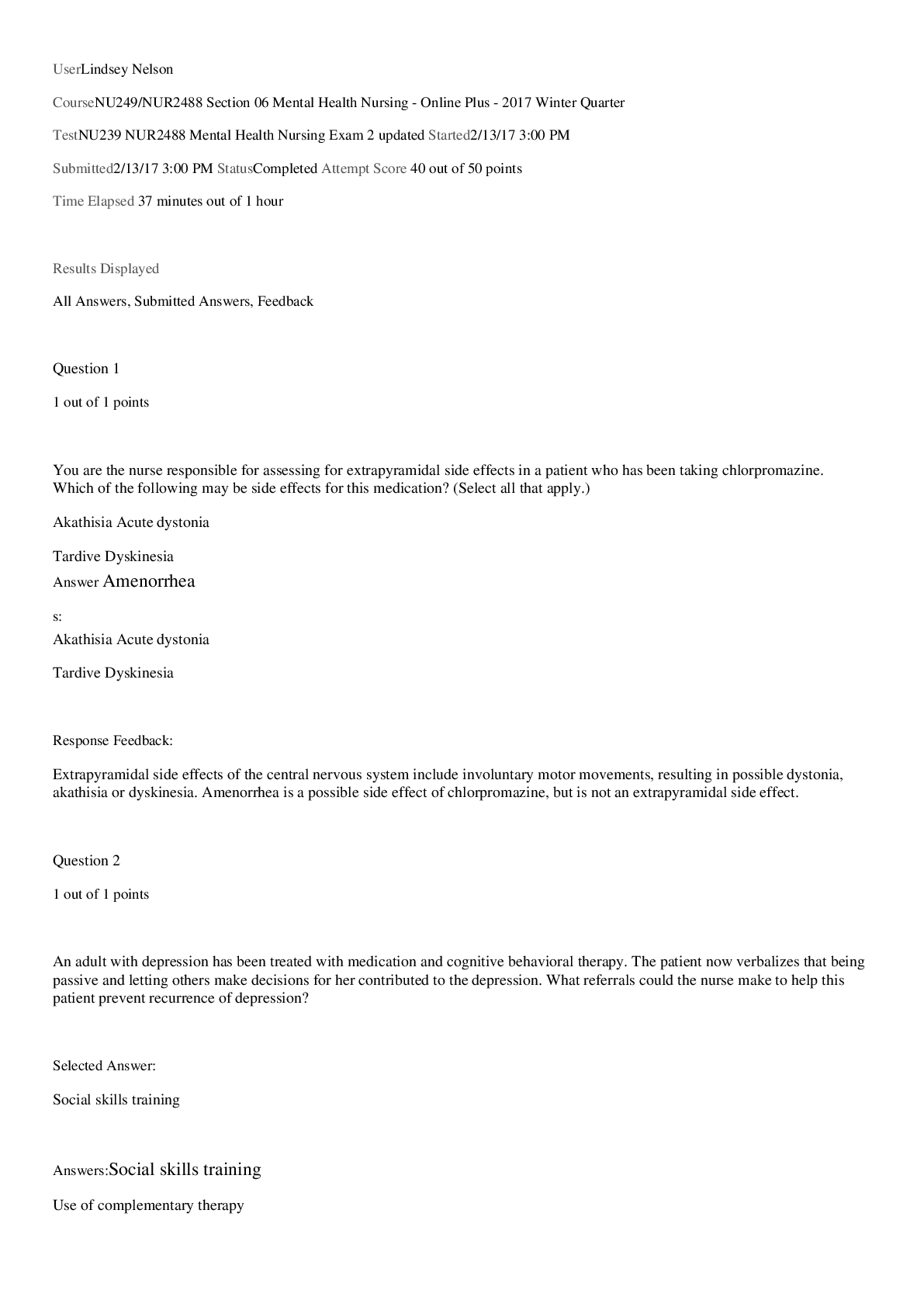*NURSING > QUESTIONS & ANSWERS > Intro to Nursing Exam 2 - Ross - Spring 2022 (All)
Intro to Nursing Exam 2 - Ross - Spring 2022
Document Content and Description Below
SBAR/I-SBAR-R A structured way of relaying critical information in a spoken form. Positives include reliability, promoting patient safety, and clear format. I-SBAR-R replaced I of I-SBAR-R Intr... oduction. Can easily be forgotten due to nerves. Include your name and the patient you are taking care of. S of I-SBAR-R Situation. A quick summary of why the call is being warranted (high bp, give data, etc.) B of I-SBAR-R Background. Give a quick overview of patient's history pertaining to event (Ex. New onset of high blood pressure, becoming symptomatic with a bad headache) A of I-SBAR-R Assessment. Explain what you are seeing (Ex. My assessment is showing that his high blood pressure is why his headache pain has increased) First R of I-SBAR-R Recommendation. This can be a "scary" part, but so crucial. You are the eyes for the physician. Tell them what you think could help or what you need (Ex. Would it be possible to get some blood pressure medicine to help control this?) Second R of I-SBAR-R Read Back. Once you receive new orders, repeat back to them. It's always good to verify as these conversations can happen so quickly (Ex. 'Order: IV labetalol 10mg. May repeat twice'). Professional Boundaries the spaces between the nurse's power and the client's vulnerability. The power of the nurse comes from the professional position and the access to private knowledge about the client Boundary violations occurs when there is confusion between the needs of the nurse and those of the client. Ask yourself this question: Could I feel comfortable telling a colleague about my interaction with this patient?" Zones of professional behavior Under-involvement, Zone of helpfulness, and over-involvement. Under-involvement (Zones of Professional Behavior) distancing yourself, showing disinterest, neglect Zone of helpfulness (Zones of Professional Behavior) the ideal space or that area of a therapeutic relationship Over-involvement (Zones of Professional Behavior) sharing personal information by the nurse, secrecy, touching, gestures, money or gifts, sexual misconduct Consequences of professional boundary violations Violation of nursing code of ethics, Reportable offense shared with your state board of nursing, Employer involvement, and/or Possible termination Phases of Nurse-Patient Relationships Orientation, working, and termination. Has to be started first and foremost prior to any other steps can. Begin in the nursing process. Orientation (Nurse-Patient Relationship) The "getting to know you" phase. Establishing trust is crucial. First impressions can set the tone of how the relationship will be. Outline and explain the activities ahead Working phase (Nurse-Patient Relationship) The portion of which you conduct what you laid out for in the orientation phase. Patients may exhibit some periods of resistance to change (Ex. Someone getting a new diagnosis of congestive heart failure). Work through this with your patient, continue to be encouraging, promote active listening and focus on continuing building of trust. Termination (Nurse-Patient Relationships) The activities that enable the nurse and patient to end their relationship, but making sure it's done in a therapeutic manner (Ex: Discharge after outpatient surgery or patient out of hospital). Levels of communication Verbal, Nonverbal, Congruent, and Incongruent communication. Verbal Communication Consists of speech (obvious form) Nonverbal Communication Used the most when someone portrays a message. Facial expressions, clothing, grooming, eye contact, People are less likely to mask their nonverbal versus their words. Congruent Communication When verbal and nonverbal communication match and reinforce each other Incongruent communication When verbal and nonverbal communication do not match each other. Can create confusion. (Ex. "I'm fine"). Common law judge rulings become law; body expands as make legal decisions Statutory law Laws that have particular importance for nurses-state laws or statutes to practice; licensing standards for professions Administrative law Law where legislature delegates authority to government agencies to create laws What do you do if standards of care are violated? Contact a medical malpractice attorney immediately. Causes of negligence Failure to follow standards of care, communicate, document, assess and monitor, act as a patient advocate, use equipment in a responsible manner Five "rights" to ensure safe delegation of tasks to unlicensed assistive personnel right task, right circumstances, right person, right direction/communication, right supervision/evaluation Values Defined as attitudes, ideals, or beliefs that guide behavior Morals Established rules of conduct to be used to distinguish right from wrong Ethics Codified actions that specify what actions an individual should take Bioethics Application of ethical principles to moral issues in health care Ethical principles Autonomy, Beneficence, Nonmaleficence, Justice, Fidelity, and Veracity. Autonomous decisions decisions based on Individual values, adequate information, Freedom from coercion, and Reason and deliberation Beneficence Based on promoting good for others. Providing pain medication to an elderly person who fell and broke a hip Nonmaleficence Duty to do no harm. Foundation of medicine's Hippocratic Oath. Also critical to nursing profession. Stopping a medication known to be harmful. A collapsed client at the mall Principal of double effect One may produce a distressful or undesirable effect if intent is to produce overall good result (Ex. Chemotherapy, organ transplant, etc). Justice Equals should be treated the same and unequals should be treated differently; In health care, this relates to allocation of resources; If you were juggling multiple patients, you would not provide better care based on who has the best insurance or who you liked better Fidelity Faithfulness or honoring one's commitments or promises; Key foundation for the nurse-patient relationship; Key for upholding the Code of Ethics for Nurses; Key for maintaining competence; (Ex. A patient requests that a nurse not reveal his terminal diagnosis to his family. The patient explains that his family would probably disregard his wishes and keep him alive no matter the circumstances). Veracity Telling the truth, not lying; Fundamental to continued trust between people; Two exceptions can exist for nurses, including If a patient asks not to be told the truth, If a patient is mentally incompetent, and iif a patient was starting chemotherapy and asked about the side effects, a nurse practicing veracity would be honest about the side effects they could expect with chemotherapy. Code of Ethics Defined as a social contract through which the profession informs society of principles and rules guiding its function Scope and Standards of Practice (ANA, 2004) Defines standards of practice and standards of professional performance Code of Ethics for Nurses with Interpretive Statements (ANA, 2001) Nursing profession's expression of its ethical values and duties to the public International Council of Nurses Code of Ethics for Nurses (ICN, 2005) Rights and responsibilities of nurses related to people, practice, society, co-workers, and the profession Steps in Ethical Decision-Making Clarify the ethical dilemma (self-reflection AND through patient's and loved one's point of view); Gather additional data (Hospital Ethical Board); Identify options; Make a decision (team Inter-professional); Act; Evaluate Living will A legal document that spells out medical treatments you would/ would not want to be used to keep you alive, as well as your preferences for other medical decisions such as pain management or organ donation. Power of Attorney A written authorization to represent or act on another's behalf in private affairs, business, or some other legal matter. The person authorizing the other to act is the principle, grantor, or donor. Advanced Directive a legal document in which a person specifies what actions should be taken for their health if they are no longer able to make decisions for themselves because of illness or incapacity Types of Learning Visual, Auditory, and Kinesthetic Visual Learning Learning that is done by seeing Auditory Learning Learning that is done by hearing Kinesthetic Learning Learning processes done by touching, feeling, or doing. Basic Principles of Learning Use of Relevance, Maturation, Reinforcement (+/-), Organization, Timing, Motivation, Readiness, Participation, Repetition, and Understandable words Relevance (Basic Learning Principles) How is the info relevant Maturation (Basic Learning Principles) How mature is the person. Reinforcement (Basic Learning Principles) Reinforce the positive and negative. Build on existing knowledge Organization (Basic Learning Principles) How is the information given organized and easy to understand. Timing (Basic Learning Principles) How spaced out the learning is. How long it takes to learn/understand. Motivation (Basic Learning Principles) Motivation to learn the information Readiness (Basic Learning Principles) How ready the person is to learn the material. Do they already know the information? Just because someone is a nurse, it does not mean that the person will know how to breastfeed Participation How being "hand on" helps the learning process. "You've seen me change your colostomy bag a few times. Are you ready to participate in the action?" Repetition How repetition helps the learning process. Understandable words How using word that the person will be able to understand will help the learning process. Don't try to be too smart. Approaches to learning Pedagofy and Andragogy Pedagogy Children and adolescents (Passive) Andragogy Adult learning (Active). Adults want to participate in learning Teaching Strategies Lectures, Discussion, Demonstration, and Role Playing Lectures (Teaching Strategies) Formal presentation; Most effective for cognitive learning; Most effective when combined with discussion; Could be boring Discussion (Teaching Strategies) Helps with sharing, clarifying feelings, and asking questions; Is deeper because it involves participation; Good for cognitive and affective domains of learning Demonstration (Teaching Strategies) Good for psychomotor skills; Explaining as skill with a demonstration; Video and audio tapes; Human contact is the preferred method; Praise is important!!!! Role Playing (Teaching Strategies) Especially important for teaching affective domain of learning; Used to work through past, present, and anticipatory feelings or new situations; Ask a child to demonstrate how his or her mother's illness has affected the family by using dolls [Show More]
Last updated: 1 year ago
Preview 1 out of 6 pages

Buy this document to get the full access instantly
Instant Download Access after purchase
Add to cartInstant download
We Accept:

Reviews( 0 )
$8.00
Document information
Connected school, study & course
About the document
Uploaded On
Aug 14, 2022
Number of pages
6
Written in
Additional information
This document has been written for:
Uploaded
Aug 14, 2022
Downloads
0
Views
75

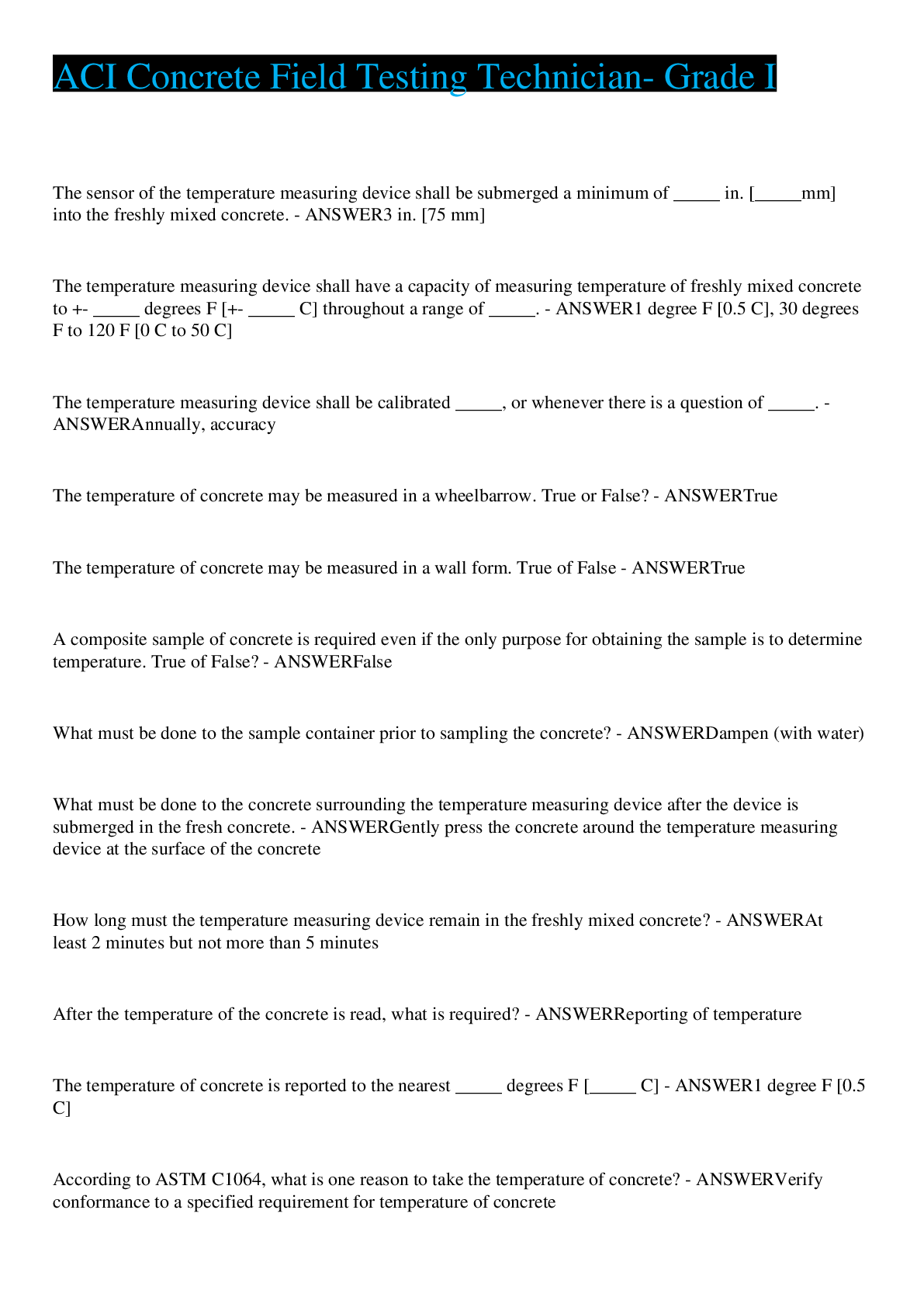


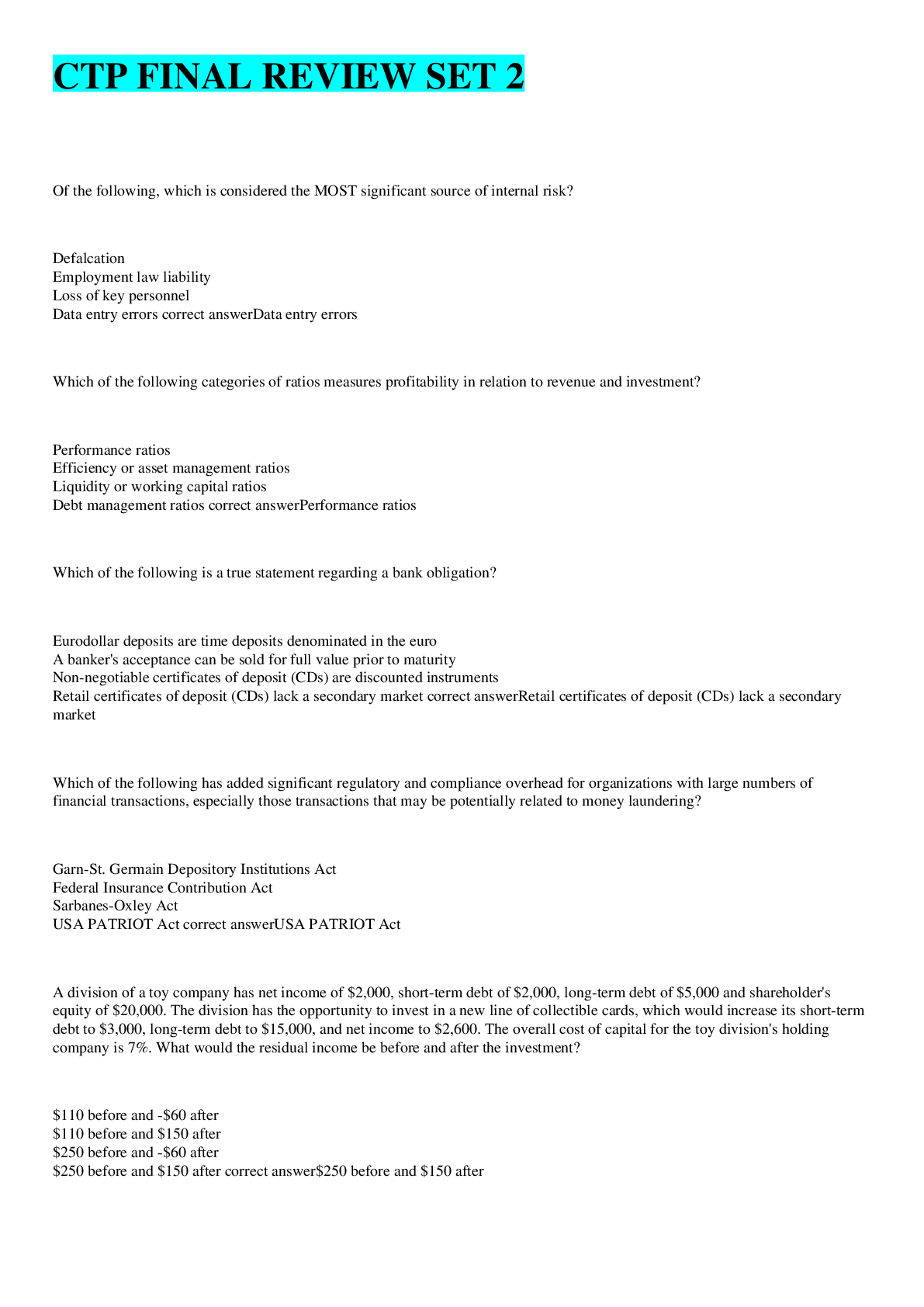
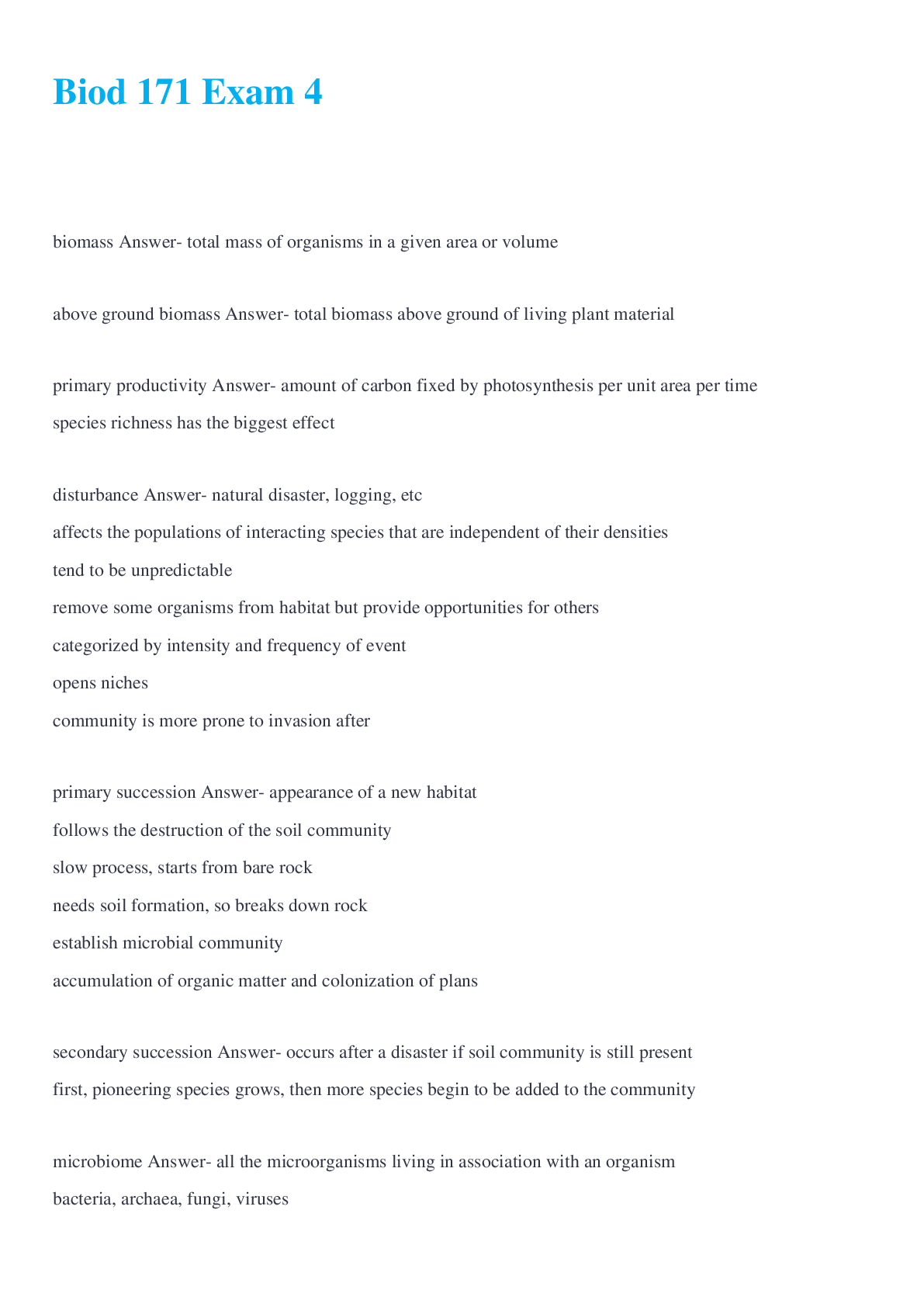
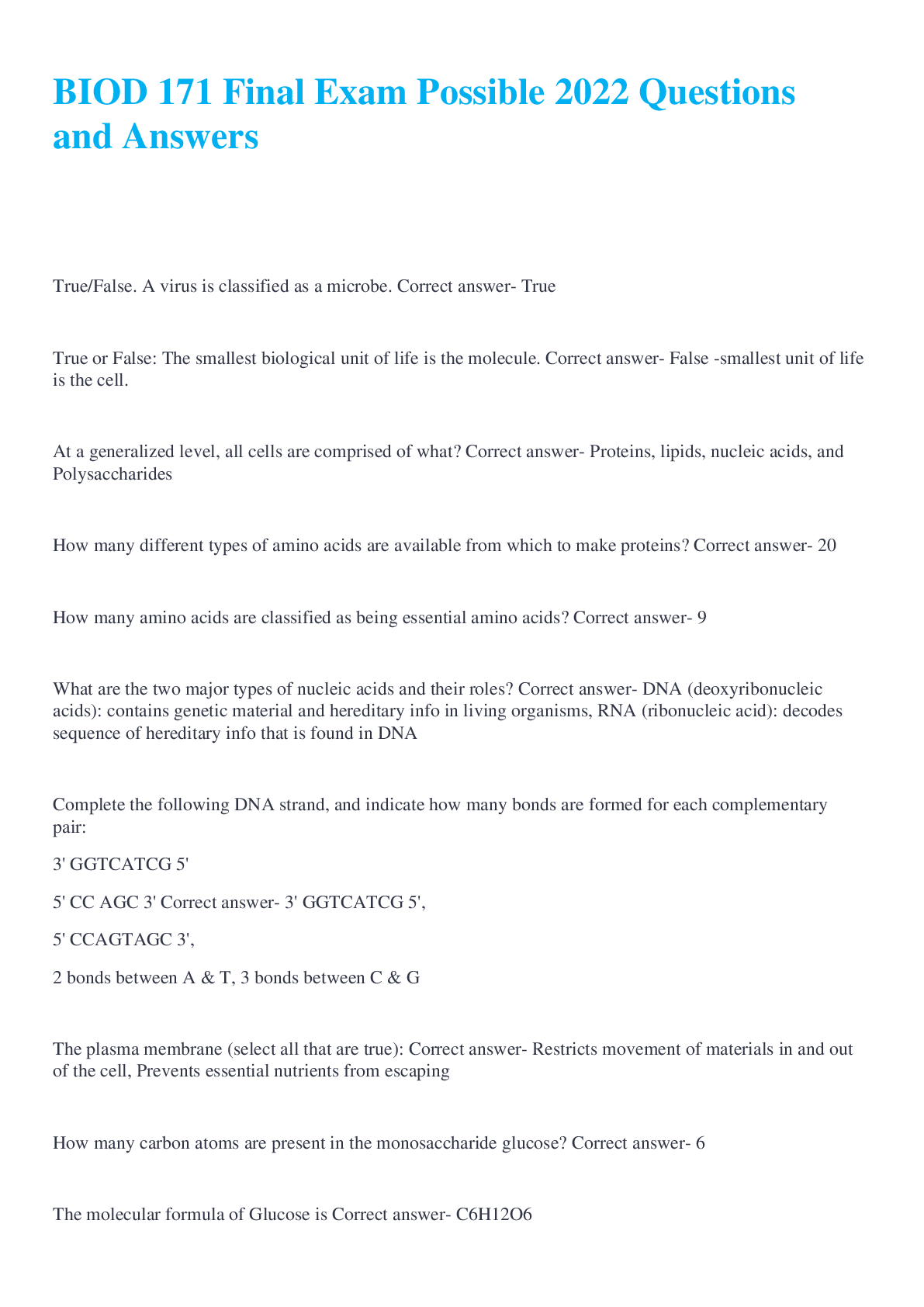
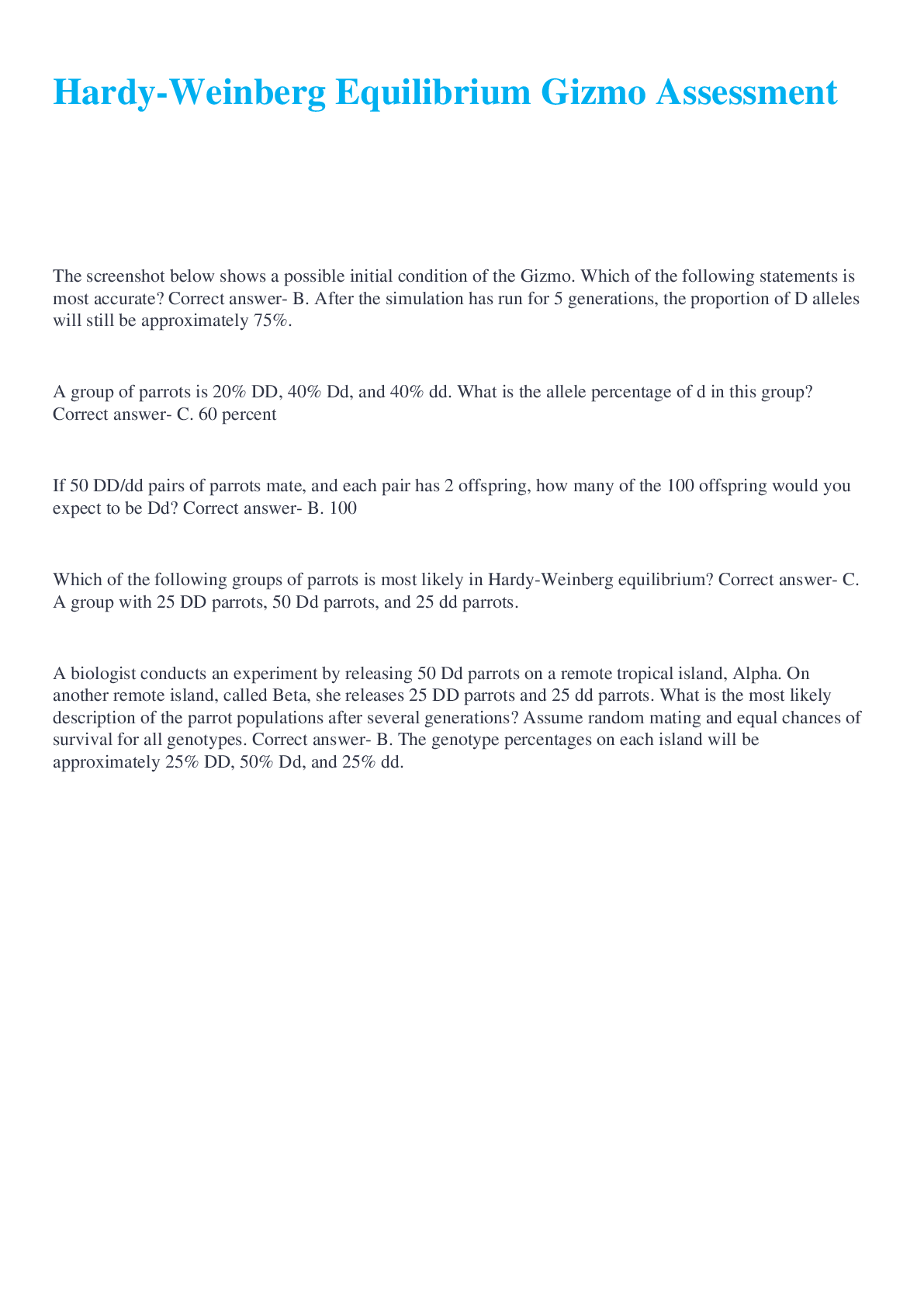
.png)
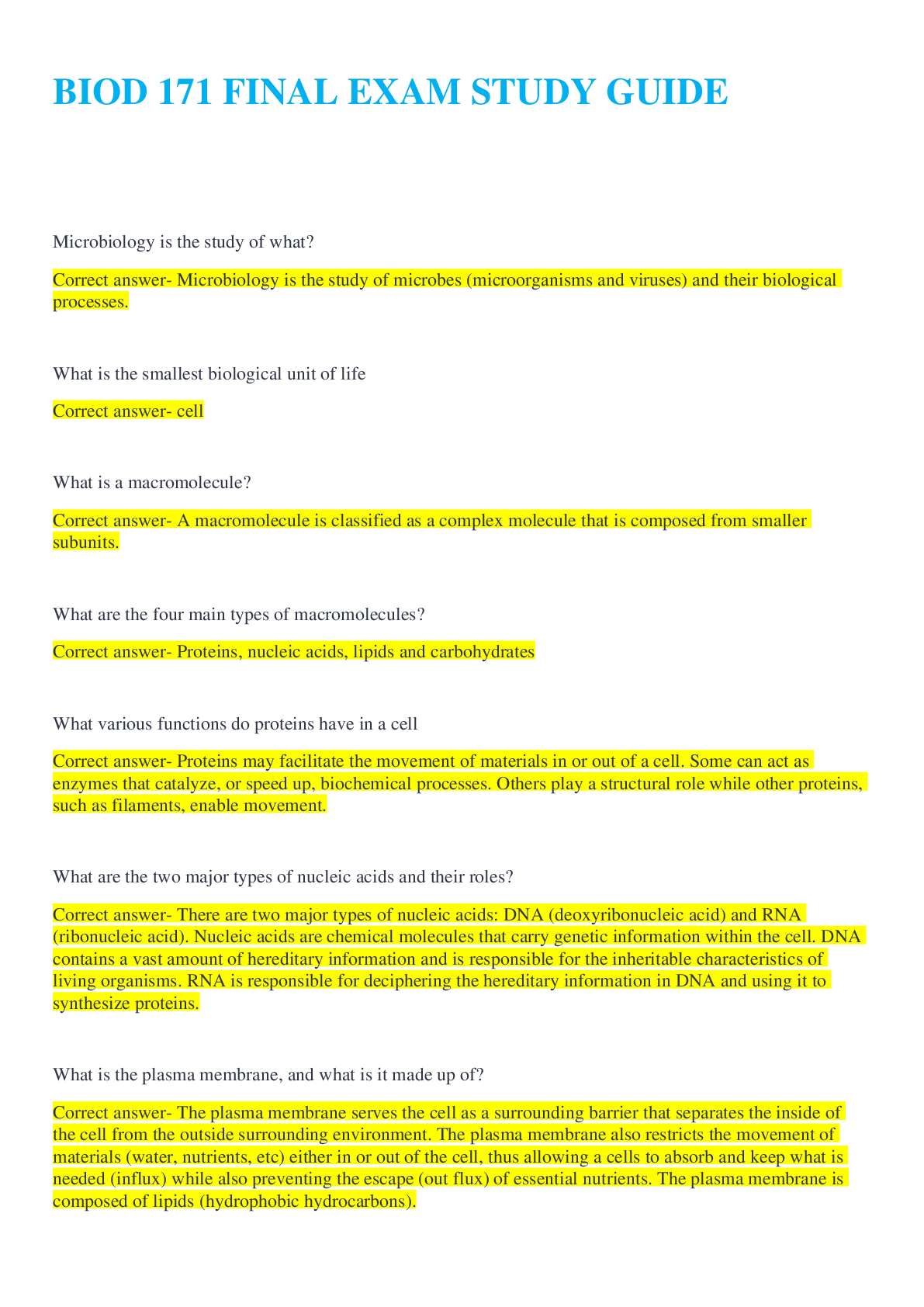
.png)

